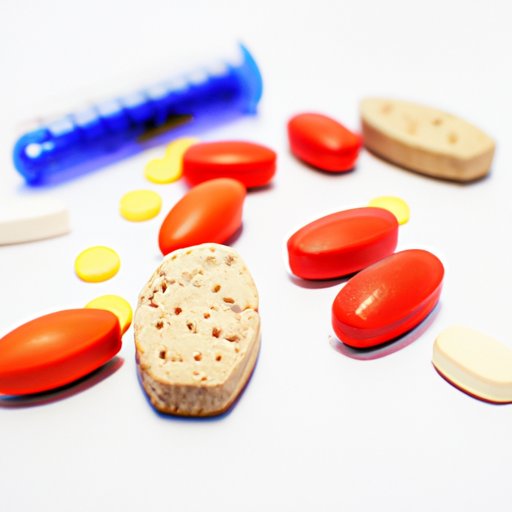
Introduction
Testosterone is a hormone that plays a crucial role in men’s development and wellbeing. Low testosterone levels can lead to a variety of symptoms, including fatigue, decreased sex drive, and decreased muscle mass. TRT treatment is a way to address these symptoms and improve overall health.
This article provides a comprehensive guide to TRT treatment, discussing the different types, how it works, and the potential risks and benefits. We’ll also explore how to determine if TRT treatment is right for you, how to maximize its effectiveness through exercise and diet, and the science behind its mechanisms for improving men’s health.
The Ins and Outs of TRT Treatment: Everything You Need to Know
TRT treatment is a hormone therapy that involves the administration of testosterone to individuals with low testosterone levels. Its purpose is to raise testosterone levels to normal levels, which can help alleviate symptoms and improve overall health.
There are different types of TRT treatment, including injections, topical gels, patches, and pellets. The type of treatment used depends on the individual’s preferences and their physician’s recommendation.
TRT treatment works by increasing testosterone levels in the body. Testosterone binds to receptors in the body, leading to changes in gene expression that contribute to muscle growth, fat loss, and an increase in sex drive.
There are various factors that contribute to low testosterone levels, including aging, obesity, and medical conditions such as diabetes and hypogonadism. Common symptoms of low testosterone levels include decreased sex drive, fatigue, decreased muscle mass, and decreased bone density.
The Risks and Benefits of TRT Treatment for Men
TRT treatment has various benefits, including increased sex drive, increased muscle mass, and improved bone density. It can also improve mood and energy levels.
However, there are potential risks and common side effects associated with TRT treatment, including acne, fluid retention, and an increased risk of blood clots and stroke. For this reason, TRT treatment is not appropriate for everyone.
The safety and effectiveness of TRT treatment depend on the individual’s overall health, age, and circumstances. Men with certain medical conditions such as prostate cancer or a history of blood clots should not undergo TRT treatment.
Deciding if TRT Treatment is Right for You: A Comprehensive Guide
Before deciding to undergo TRT treatment, it’s essential to determine if it’s the right course of action. You can do so by evaluating your symptoms and consulting with a healthcare professional.
Factors to consider before undergoing TRT treatment include your age, overall health, lifestyle, and any medical conditions you may have. Your physician can help determine if TRT treatment is safe and appropriate for you.
It’s also important to consider the impact of TRT treatment on your lifestyle. For example, you may need to make dietary and exercise changes to optimize the effectiveness of the treatment.
Maximizing the Benefits of TRT Treatment Through Exercise and Diet
Exercise and diet can have a significant impact on the effectiveness of TRT treatment. Exercise can help increase muscle mass, improve bone density, and decrease body fat, while a healthy diet can help optimize hormonal balance and promote overall health.
When it comes to exercise, strength training is particularly effective at increasing muscle mass and bone density. Cardiovascular exercise is also beneficial for overall health and can help reduce body fat.
A healthy diet that emphasizes protein, healthy fats, and fiber is recommended for individuals undergoing TRT treatment. It’s important to avoid processed foods and sugar, which can contribute to inflammation and hormonal imbalances.
The Science Behind TRT Treatment and How It Works to Improve Men’s Health
TRT treatment works by increasing testosterone levels in the body, leading to changes in gene expression that contribute to improved health and wellbeing. By addressing low testosterone levels, TRT treatment can help to reduce symptoms and improve overall health.
The mechanisms by which TRT treatment works are complex and involve changes in gene expression, protein synthesis, and cellular signaling. In real-life examples, men who have undergone TRT treatment have reported significant improvements in muscle mass, bone density, sex drive, and overall energy levels.
Conclusion
TRT treatment is a viable solution for men who are experiencing symptoms related to low testosterone levels. However, it’s essential to make an informed decision that takes into account the potential risks and benefits, as well as lifestyle changes that may impact the treatment’s effectiveness.
Consulting with a healthcare professional is key to determining if TRT treatment is safe and appropriate for you. By optimizing exercise and diet, and making informed decisions about treatment, you can improve your health and wellbeing and enjoy a more fulfilling life.




